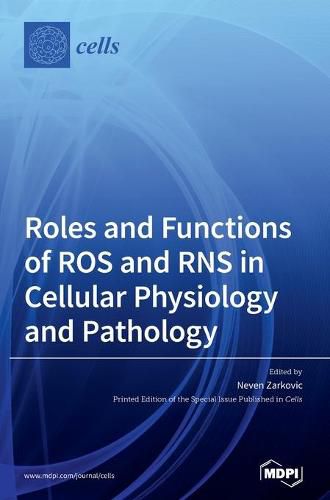Readings Newsletter
Become a Readings Member to make your shopping experience even easier.
Sign in or sign up for free!
You’re not far away from qualifying for FREE standard shipping within Australia
You’ve qualified for FREE standard shipping within Australia
The cart is loading…






This title is printed to order. This book may have been self-published. If so, we cannot guarantee the quality of the content. In the main most books will have gone through the editing process however some may not. We therefore suggest that you be aware of this before ordering this book. If in doubt check either the author or publisher’s details as we are unable to accept any returns unless they are faulty. Please contact us if you have any questions.
Our common knowledge on oxidative stress has evolved substantially over the years and has been mostly focused on the fundamental chemical reactions and the most relevant chemical species involved in the human pathophysiology of oxidative stress-associated diseases. Thus, reactive oxygen species and reactive nitrogen species (ROS and RNS) were identified as the key players initiating, mediating, and regulating the cellular and biochemical complexity of oxidative stress either as physiological (acting pro-hormetic) or as pathogenic (causing destructive vicious circle) process. The papers published in this particular Special Issue of the Cells demonstrate the impressive pathophysiological relevance of ROS and RNS in a range of contexts, including the relevance of second messengers of free radicals like 4-hydroxynonenal, allowing us to assume that even more detailed mechanisms of their positive and negative effects lie in wait, and should assist in better monitoring of the major modern diseases and the development of advanced integrative biomedicine treatments.
$9.00 standard shipping within Australia
FREE standard shipping within Australia for orders over $100.00
Express & International shipping calculated at checkout
This title is printed to order. This book may have been self-published. If so, we cannot guarantee the quality of the content. In the main most books will have gone through the editing process however some may not. We therefore suggest that you be aware of this before ordering this book. If in doubt check either the author or publisher’s details as we are unable to accept any returns unless they are faulty. Please contact us if you have any questions.
Our common knowledge on oxidative stress has evolved substantially over the years and has been mostly focused on the fundamental chemical reactions and the most relevant chemical species involved in the human pathophysiology of oxidative stress-associated diseases. Thus, reactive oxygen species and reactive nitrogen species (ROS and RNS) were identified as the key players initiating, mediating, and regulating the cellular and biochemical complexity of oxidative stress either as physiological (acting pro-hormetic) or as pathogenic (causing destructive vicious circle) process. The papers published in this particular Special Issue of the Cells demonstrate the impressive pathophysiological relevance of ROS and RNS in a range of contexts, including the relevance of second messengers of free radicals like 4-hydroxynonenal, allowing us to assume that even more detailed mechanisms of their positive and negative effects lie in wait, and should assist in better monitoring of the major modern diseases and the development of advanced integrative biomedicine treatments.